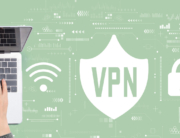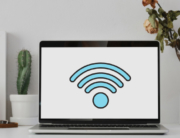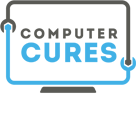Home / Handy Tips /
 Kids love technology. They seem to have a natural knack for it. It’s incredible to see children as young as 4 or 5 navigate a tablet or computer. But with this confidence comes some level of risk.
Kids love technology. They seem to have a natural knack for it. It’s incredible to see children as young as 4 or 5 navigate a tablet or computer. But with this confidence comes some level of risk.
Not everything online is safe or appropriate for children and teenagers to see, let alone engage with. Explicit sexual and violent content is rife, and predatory websites target younger internet-users. Learning how to protect your child online is essential, especially considering Australia doesn’t have a national Internet filter like other countries do.
The truth is, you can’t protect your kids from everything. Here are a few ways you can minimise the risk of exposing children to inappropriate content online.
Turn On Google Safe Search
Google safe search is an easy way to filter out inappropriate content. To switch it on, head to www.google.com.au/preferences. You’ll see this:

Tick ‘Turn on SafeSearch’. You can also lock SafeSearch by logging into your Google account. This is a good option, particularly if you’re dealing with older, more tech-savvy kids and teens.
You can also enable similar safe-search functions for Yahoo, Bing, and YouTube. Click on each search engine name for instructions.
Take Advantage of Filters
Both Mac and Windows have built-in adult content filters.
- Learn how to setup adult content filters for Mac here: support.apple.com/en-au/HT201813
- Learn how to setup adult content filters for Windows here: www.laptopmag.com/articles/parental-controls-windows-10
In addition to built-in filters, there are a ton of third-party Internet filters available for both Mac and PC computers, and internet-enabled devices. OpenDNS is a free filter that connects to your home’s modem, and applies the filter to any connected device. Of course, some inappropriate content will slip through, so it’s best to enable safe-search on all Internet browsers, too.
Note, however, that filters and safe-search functions will not protect your children from adult content on apps. Apps that may have adult content include Facebook, Instagram, Vine, and Tumblr.
Give Your Child Access to Just One Device
One way to protect your child online is to give them access to just one device. On this device, install just one Internet browser (or none at all for younger children), and implement safe search on that browser. Ensure kids can’t install new browsers or change the browser settings by adding a parental control password.
As for the other devices, keep them out of reach, or secured with a private password.
How to Protect Your Child Online: Final Tips
- Be realistic. Once your kids reach a certain age and have their own devices, it will be near impossible to limit the type of content they are exposed to. Restricting an 18-year-old’s personal smart phone probably won’t go down well.
- Have a conversation with your child about being safe online. Honesty is the best policy.
- Make sure family computers are setup in the living room, rather than in a bedroom or isolated office.
- Avoid spying on your child’s online activity, unless you have serious concerns about their safety.
Need Help?
Some adult content filters can be complex and tricky to use. If you’d like help child-proofing your computers and Internet, We’d be happy to assist. Give us a call on 1300 553 166 or fill out the form on this page.








Leave A Comment